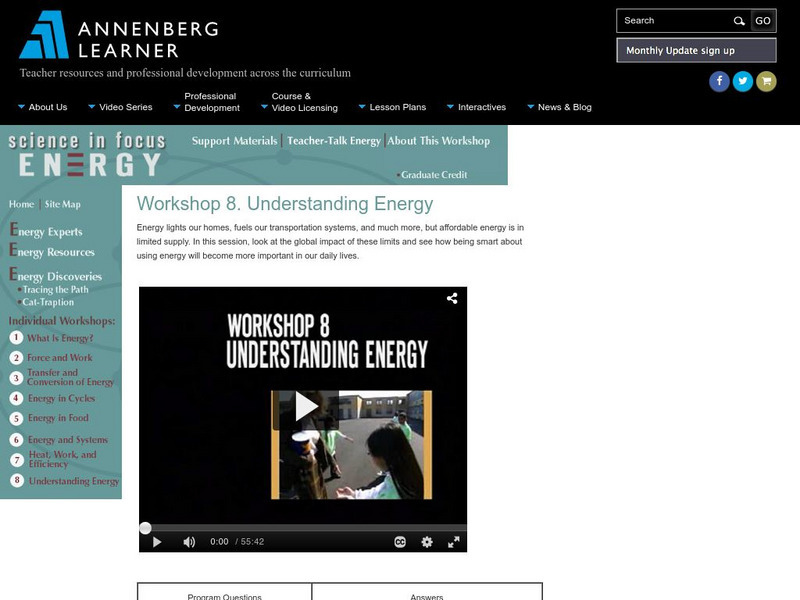Curated Video
Comparing and Evaluating Energy Resources
The video provides an overview of the different ways in which energy resources can be compared and evaluated, including their renewability, reliability, and environmental impact. The presenter discusses various types of energy resources,...
Curated Video
Renewable Energy Resources: Advantages and Disadvantages
In this video, the speaker discusses different types of renewable energy resources including hydroelectric energy, wind power, solar energy, biofuels, tidal power, water waves, and geothermal power. The speaker explains the advantages...
PBS
Pbs: Nova: Making Stuff: Cleaner
Explore materials science as it pertains to developing alternative ways to create clean energy. Subject matter is geared toward creating a sustainable future with a zero-waste world. [53:00]
Annenberg Foundation
Annenberg Learner: Science in Focus: Energy: Understanding Energy
A video workshop looking at the world's use of fossil fuels as an energy source. Includes discussions about the limits of fossil fuel use and the importance of teaching energy conservation and investing in alternative energy sources.
PBS
Pbs: Nova Labs: Toward a Smarter Grid
Find out how the U.S. power grid has grown and changed since its start during the late 1800s. [2:56]
Other
Energy Now!: Energy 101: Electricity Generation
Animated correspondent, "Little Lee Patrick Sullivan," follows from its source to the light bulb in your home, explaining different fuels, thermal power generation, transmission and the grid. [5:19]
PBS
Pbs: Nova Labs: Growing Appetites, Limited Resources
Humans' access to energy resources has often meant the difference between illness and health, poverty and wealth, and illiteracy and education. Learn more with this short overview. A transcript is provided as well. [2:21]





